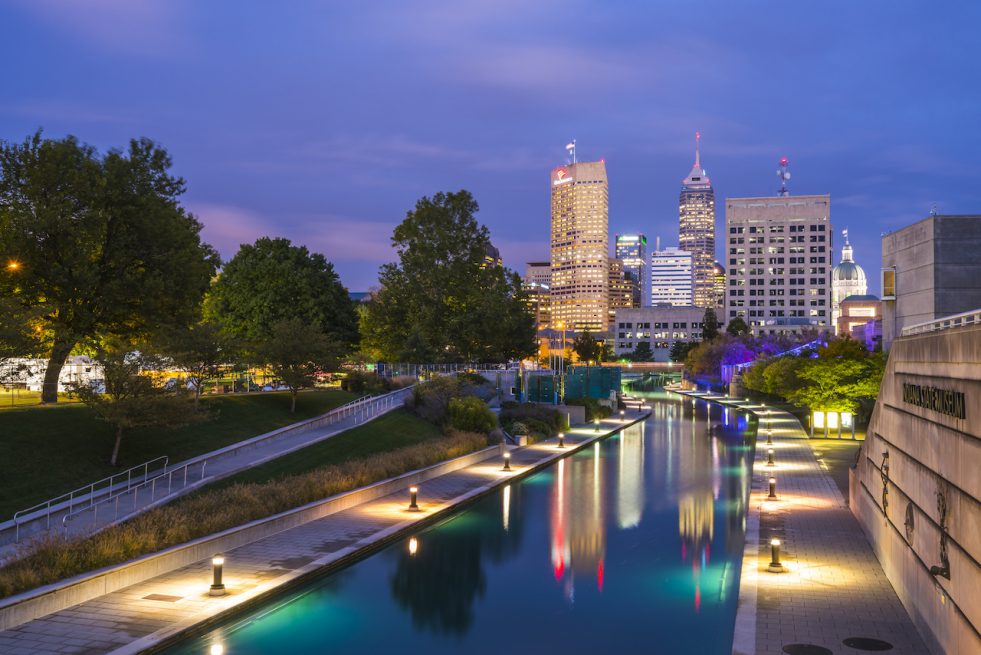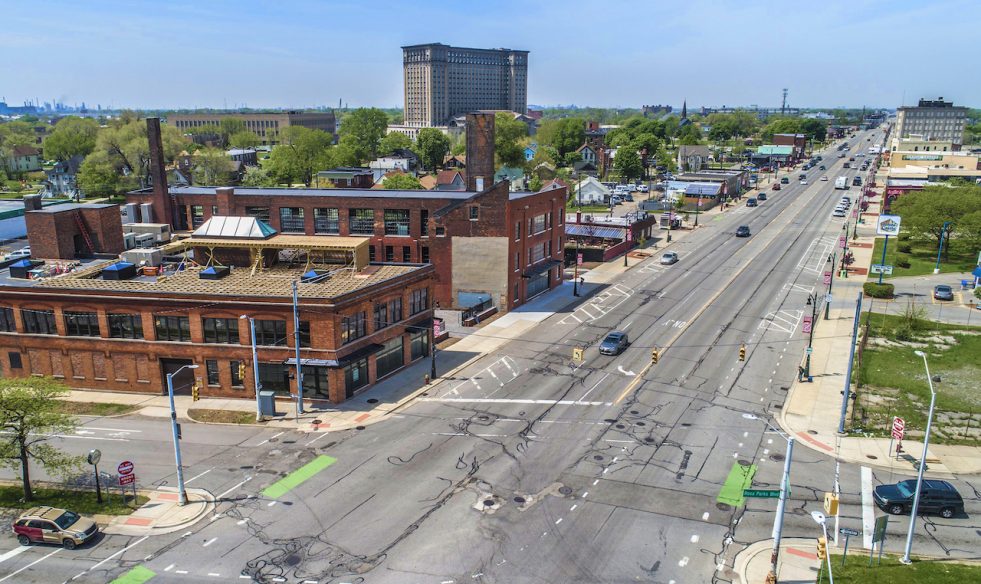Ford City:One Offering up to $550k in Pilot Funding for Mobility Solutions

Who will you meet?
Cities are innovating, companies are pivoting, and start-ups are growing. Like you, every urban practitioner has a remarkable story of insight and challenge from the past year.
Meet these peers and discuss the future of cities in the new Meeting of the Minds Executive Cohort Program. Replace boring virtual summits with facilitated, online, small-group discussions where you can make real connections with extraordinary, like-minded people.
The Ford Mobility City:One Challenge is built on the belief that we build a city in motion one person, one solution at a time. Through last year’s challenges, we conducted hours of research and conversations with residents. Through these activities, we’ve learned that people have nuanced issues and pain points when it comes to mobility. We heard issues that range from the person in a wheelchair who needs to get groceries but can’t get to the bus due to icy sidewalks in the winter, or the dad who gets stuck behind an accident while rushing across town in rush hour to pick up his kid from school. Lack of mobility access created through lack of accessibility or infrastructure hurdles creates lower quality of life for residents. The City:One Challenge aims to change that by collaborating with resident entrepreneurs and businesses, conducting research, and funding pilot projects that can make a near term impact in people lives.
This year we are inviting people to participate in our challenges in Indianapolis, Mexico City, Detroit (Focused in the Michigan Central Station development area), and Austin, Texas. We are offering up to $100,000 ($250,000 in Detroit) to the best ideas that can meet the needs of the residents in those cities. To submit a proposal for a chance at the pilot funding you do not need to be a resident of those cities. Read the rules for specifics on eligibility.
The application openings and closing for the four 2019 challenge cities are:
Austin: September 10 – November 5, 2019

Mexico City: August 22 – October 24, 2019

Indianapolis: May 28 – September 17, 2019

Michigan Central Station (Detroit): September 4 – October 31

For example, in Indianapolis, we’ve spoken with nearly 1,000 residents, which uncovered many issues and pain points regarding mobility and transportation. Through those conversations and guidance from Indianapolis city government, we identified four opportunity areas that the Challenge aims to address:
- Increase Reliable Access
- Expand Affordable Transportation Choices
- Support Residents with Disabilities or Other Challenges
- Create Comfortable Journeys for Families
“I think it’s important that as a city we embrace new technology… Personal mobility is a very important aspect of what we try to accomplish on behalf of the residents of our city, so I want that to be established at the outset.” – Mayor Joe Hogsett (James Briggs, Indianapolis Star. July 20, 2018)
These four areas are the prime areas that the City:One Challenge aims to address through proposals. For more details, read the full Challenge Brief and full Brief Report.
Each city has its own set of opportunity areas derived from the community stories and research. Learn more on the city websites.
Using Analytics to Understand the Mobility Landscape
In addition to traditional research through customer and community discovery, we leveraged Ford’s analytic power to dive deep into the data and build some interesting models around mobility and transportation. At every step in the process, we are consulting with cities and residents to understand what communities and governments need.
Creating a baseline of the mobility landscape in a city is key to beginning to understand what solutions could fit in any given area or neighborhood, At the direction of the city of Indianapolis, we tried to understand the different types of built environment across Indianapolis; we compiled and analyzed data about transit coverage and frequency, non-motorized infrastructure, land use diversity, street network connectivity, density of jobs and people, and the business presence/mix in each neighborhood. In total, we compiled 20 indicators related to the built environment in each neighborhood. Using this data and a machine learning clustering algorithm, we then identified seven distinct neighborhood segments within Indianapolis.
Segment 1: Core Corridors with No-Car Dreams
Very strong transit coverage & frequency, very strong bike & pedestrian infrastructure, above average land use dedicated to parking, dense street network, very high population density
Segment 2: Suburban Shopping & Density
Below average transit presence and street network density, above average business & population density, diverse mix of land use types
Segment 3: Destination Downtown
Most robust transit presence, significant job and business density, substantial land use dedicated to parking, very strong bike & pedestrian infrastructure
Segment 4: Middle-of-the-Road
Below average transit presence and bike & pedestrian infrastructure, low density, above average mix of housing land use types
Segment 5: Home & Auto-Oriented
Sparse transit coverage, very low business density, suburban and sparse street network, minimal bike and pedestrian infrastructure
Segment 6: Rural, Industrial, and Suburban
Infrequent or non-existent transit, sparse street network, sparse or non-existent bike & pedestrian infrastructure, very low density, minimal land use diversity
Segment 7: Inner-Ring and On-the-Fence
Above average transit coverage and job presence, average density and bike & pedestrian infrastructure

Next, to better understand the differences in mobility needs for the individuals that live in the neighborhoods of Indianapolis, we looked at a variety of population characteristics for Indianapolis residents. We compared income, household types (e.g., families with children vs. nonfamily households), age distribution, vehicle ownership, veteran status, disability status, commute patterns, and more for each neighborhood type. This analysis was used to inform how we message opportunity areas to potential Challenge applicants, ensuring that solutions are piloted with a nuanced understanding of both the environment, and more importantly, the people in which they will operate.
In addition to analytics and data science we work to understand individuals experience through interviews and our online forum. We discovered that in Indianapolis being connected to the City’s social and economic life is predicated on car ownership. For many neighborhoods in and around Indianapolis, access to a car determines a person’s ability to get to and from a job, or engage in a healthy social life. For the 20% of residents who do not use a car, their work and social options are considerably limited to the confines of IndyGo’s routes and schedules. With no access to a car, low-income families are often forced to relocate to be within walking distance of a transit line or hub, which also happen to be the more expensive areas in Indianapolis
“Mobility for me means being able to successfully get to work, to appointments, and to participate socially.” Indy resident
We aim to meet this need at Ford mobility. Through the City:One Challenge, we help to get solutions on fast-tracked to pilots so we can help residents move freely.
This year’s program builds on the momentum from our first Challenge cohort of cities(Pittsburgh, Miami-Dade County, and Grand Rapids) launched in 2018. Visit www.cityonechallenge.com for more information and to submit an idea. You can also email us at cityone@ford.com, or socialize with us on Twitter.
Discussion
Leave your comment below, or reply to others.
Please note that this comment section is for thoughtful, on-topic discussions. Admin approval is required for all comments. Your comment may be edited if it contains grammatical errors. Low effort, self-promotional, or impolite comments will be deleted.
1 Comment
Submit a Comment
Read more from MeetingoftheMinds.org
Spotlighting innovations in urban sustainability and connected technology
Middle-Mile Networks: The Middleman of Internet Connectivity
The development of public, open-access middle mile infrastructure can expand internet networks closer to unserved and underserved communities while offering equal opportunity for ISPs to link cost effectively to last mile infrastructure. This strategy would connect more Americans to high-speed internet while also driving down prices by increasing competition among local ISPs.
In addition to potentially helping narrow the digital divide, middle mile infrastructure would also provide backup options for networks if one connection pathway fails, and it would help support regional economic development by connecting businesses.
Wildfire Risk Reduction: Connecting the Dots
One of the most visceral manifestations of the combined problems of urbanization and climate change are the enormous wildfires that engulf areas of the American West. Fire behavior itself is now changing. Over 120 years of well-intentioned fire suppression have created huge reserves of fuel which, when combined with warmer temperatures and drought-dried landscapes, create unstoppable fires that spread with extreme speed, jump fire-breaks, level entire towns, take lives and destroy hundreds of thousands of acres, even in landscapes that are conditioned to employ fire as part of their reproductive cycle.
ARISE-US recently held a very successful symposium, “Wildfire Risk Reduction – Connecting the Dots” for wildfire stakeholders – insurers, US Forest Service, engineers, fire awareness NGOs and others – to discuss the issues and their possible solutions. This article sets out some of the major points to emerge.
Innovating Our Way Out of Crisis
Whether deep freezes in Texas, wildfires in California, hurricanes along the Gulf Coast, or any other calamity, our innovations today will build the reliable, resilient, equitable, and prosperous grid tomorrow. Innovation, in short, combines the dream of what’s possible with the pragmatism of what’s practical. That’s the big-idea, hard-reality approach that helped transform Texas into the world’s energy powerhouse — from oil and gas to zero-emissions wind, sun, and, soon, geothermal.
It’s time to make the production and consumption of energy faster, smarter, cleaner, more resilient, and more efficient. Business leaders, political leaders, the energy sector, and savvy citizens have the power to put investment and practices in place that support a robust energy innovation ecosystem. So, saddle up.






Kindly i would like to know whether Kenya can apply.